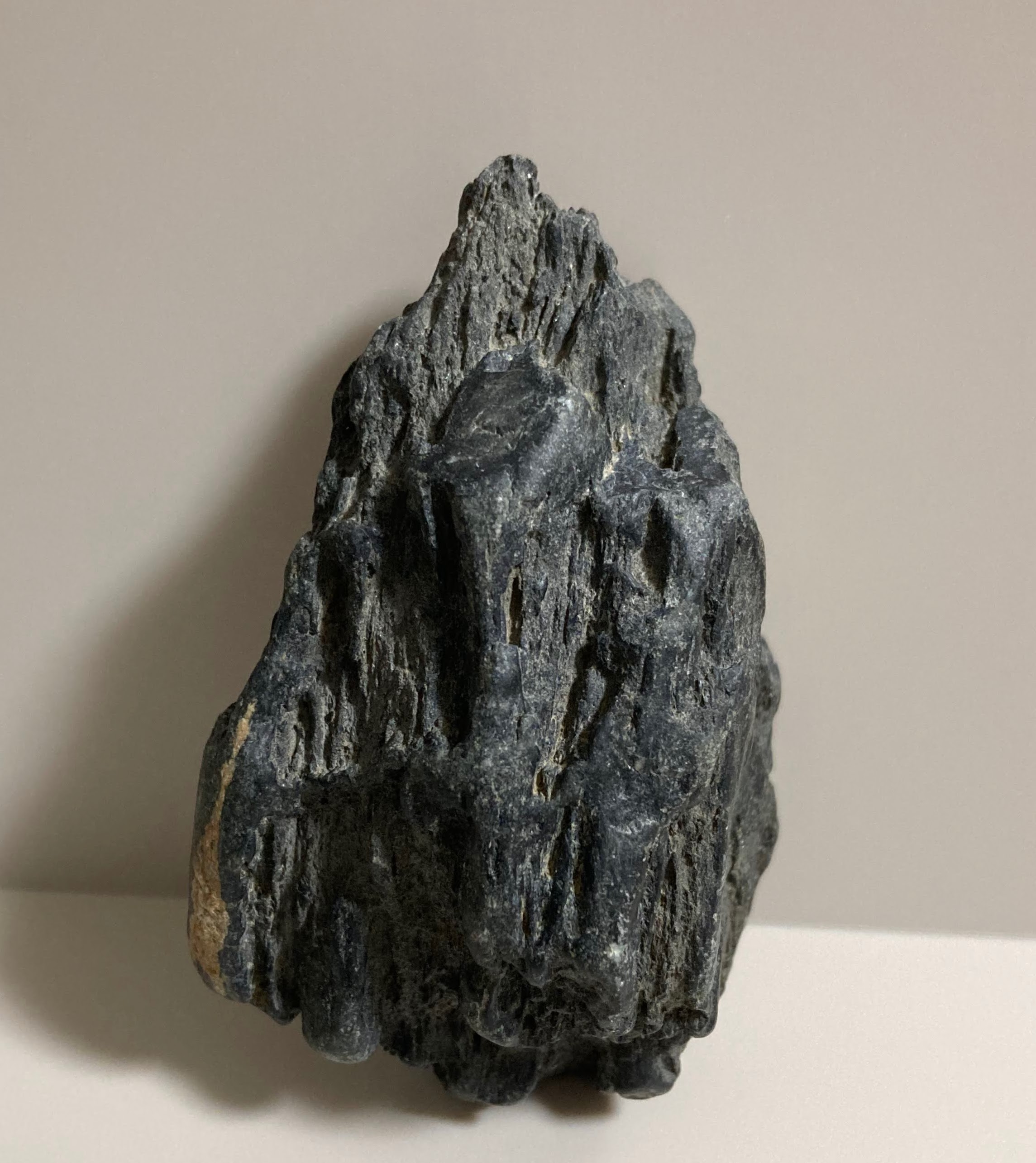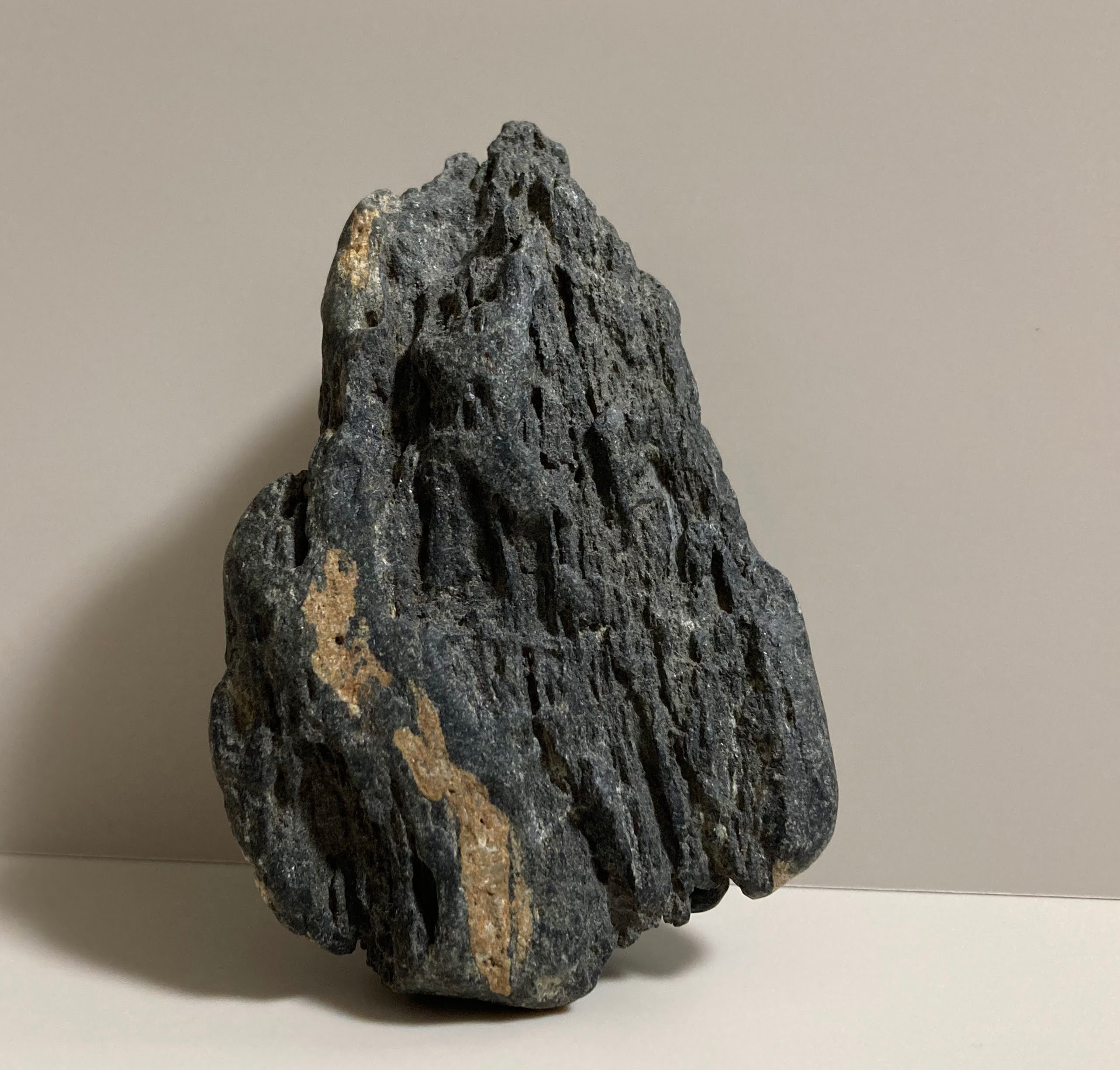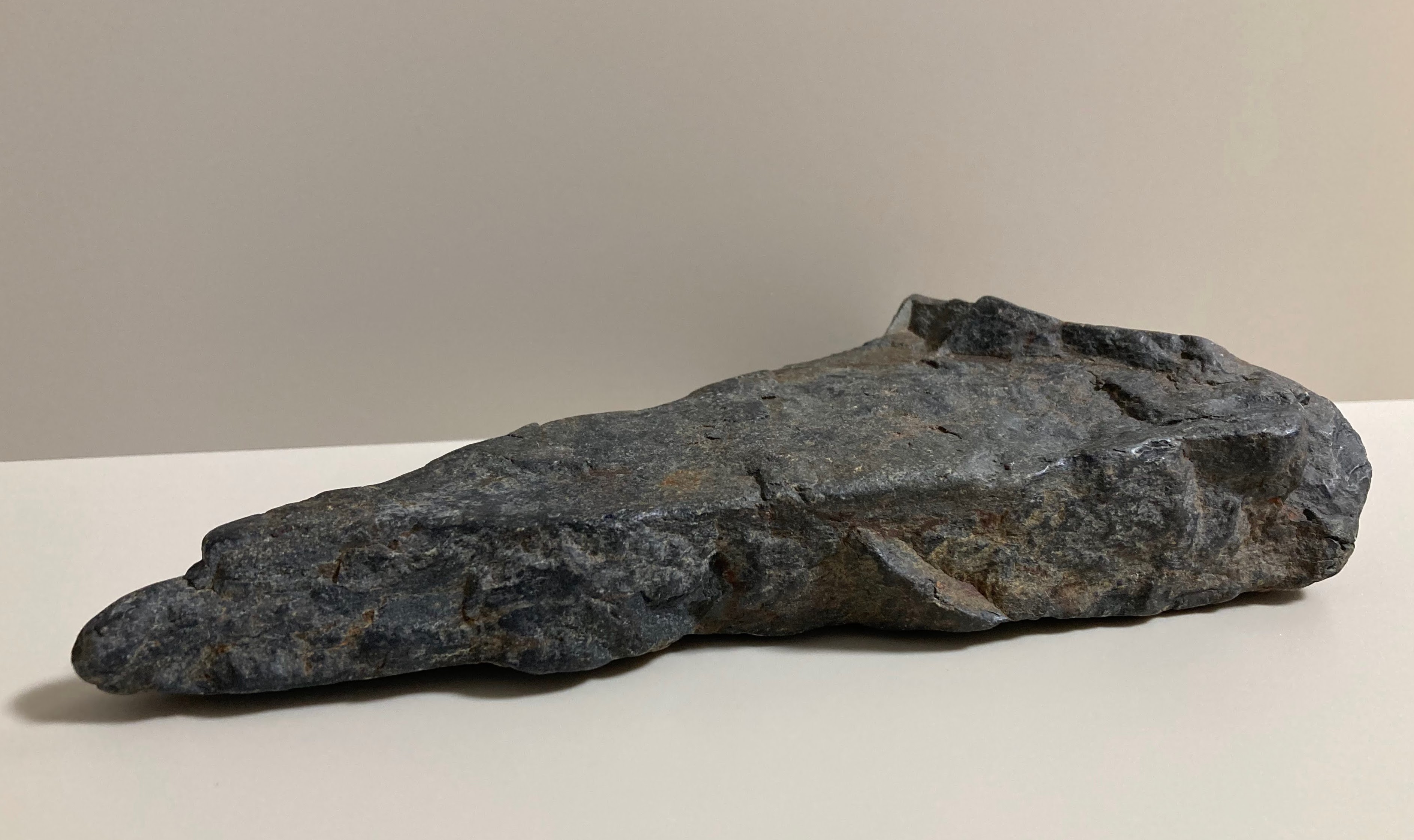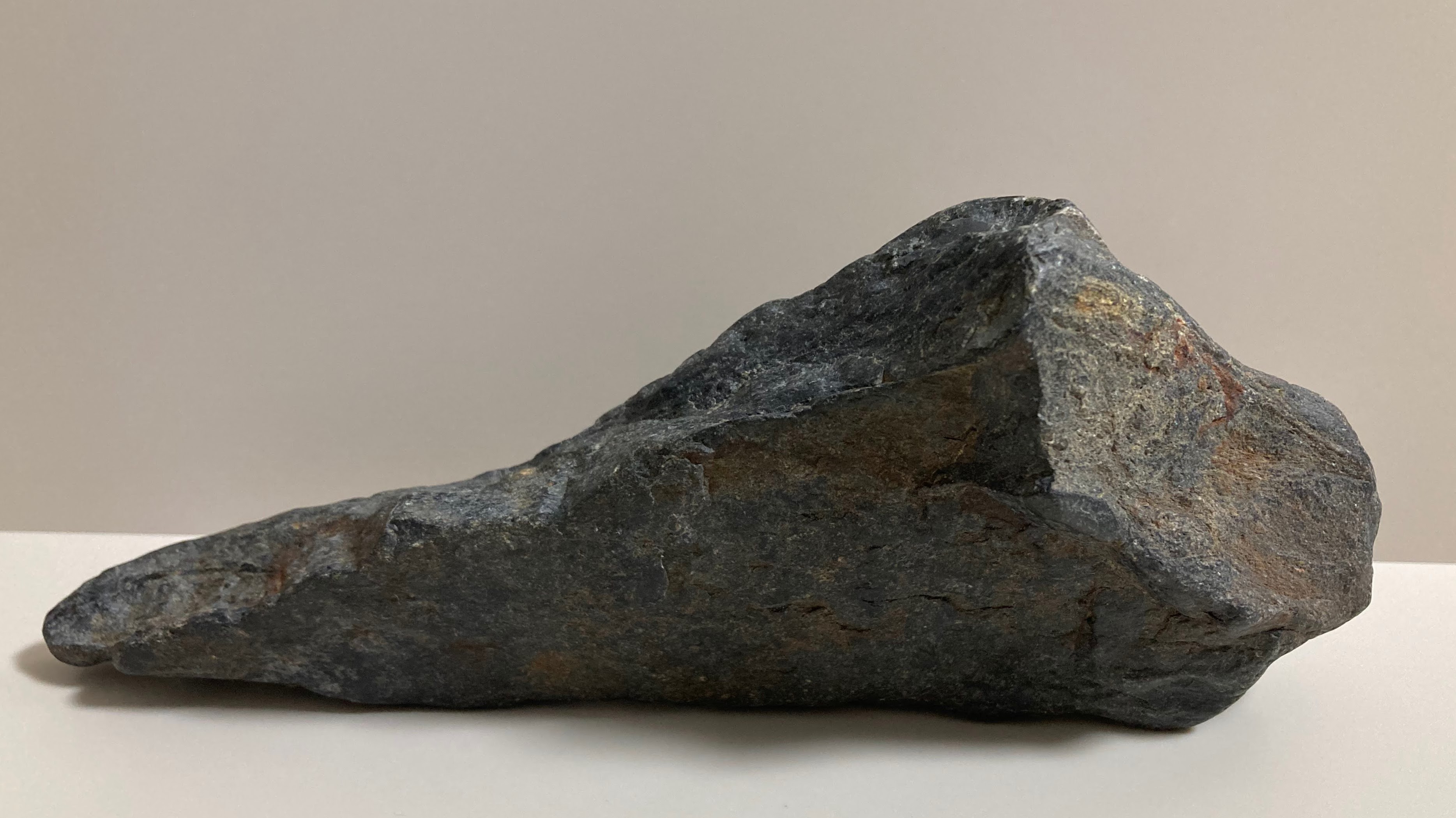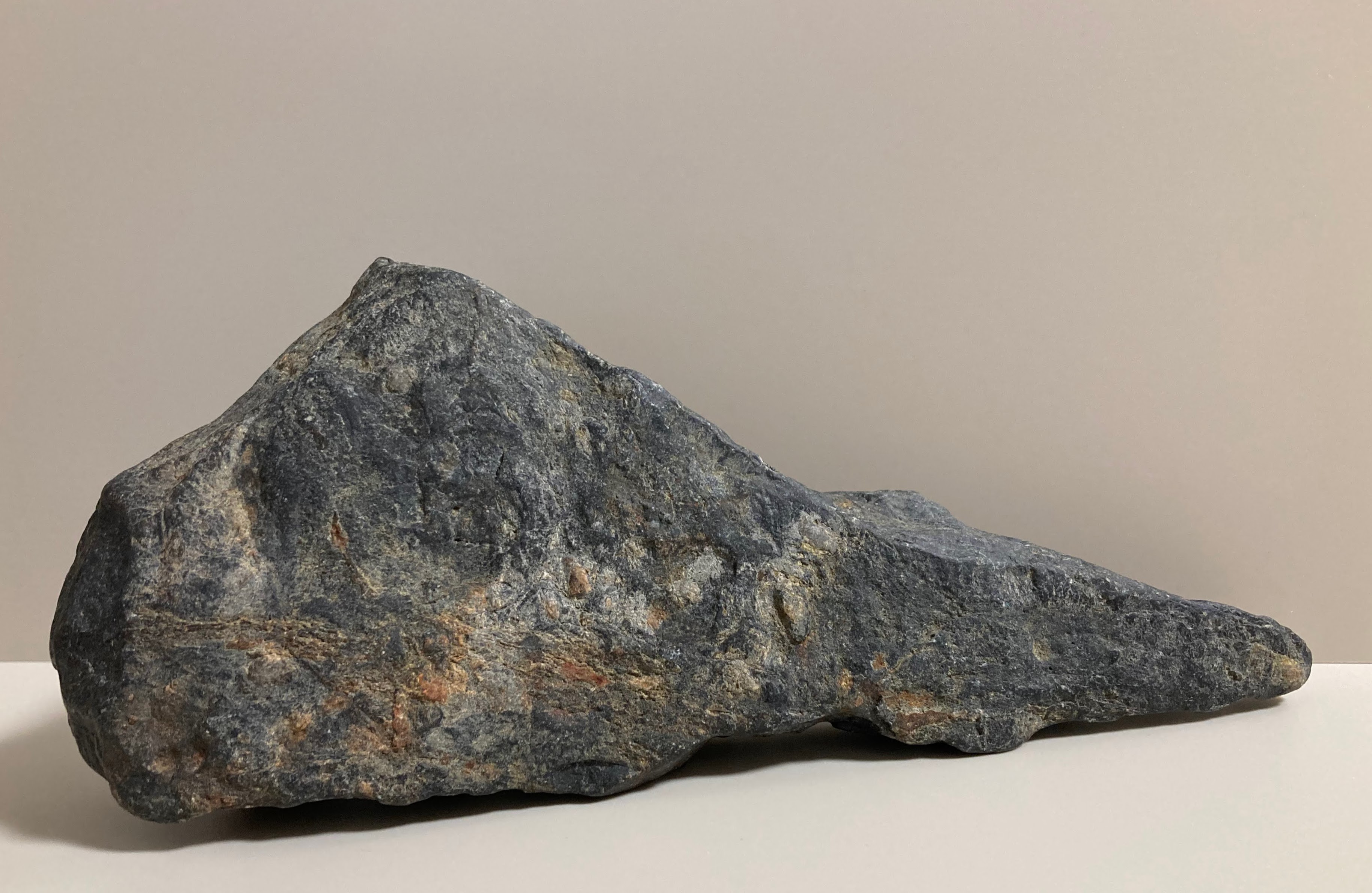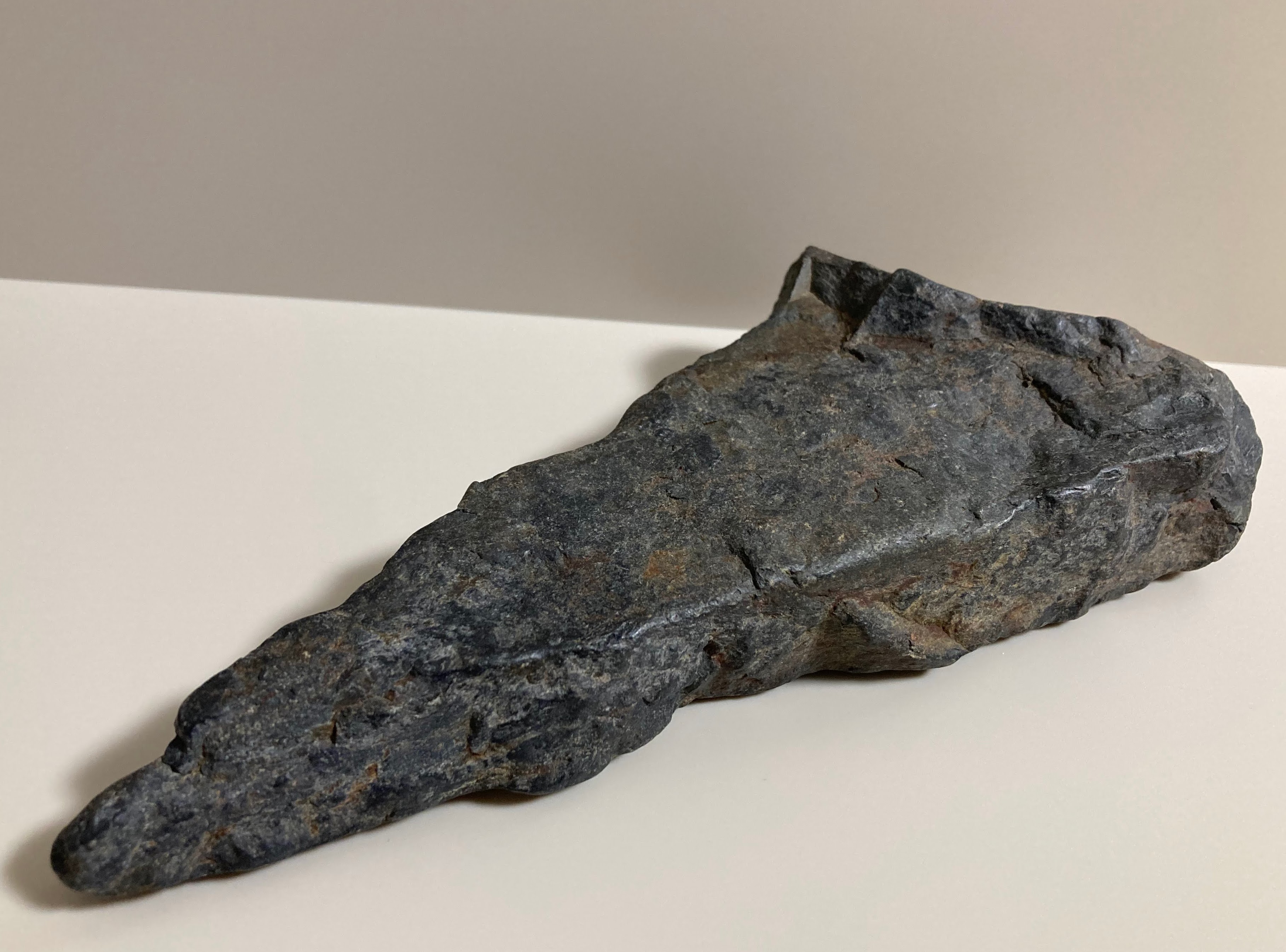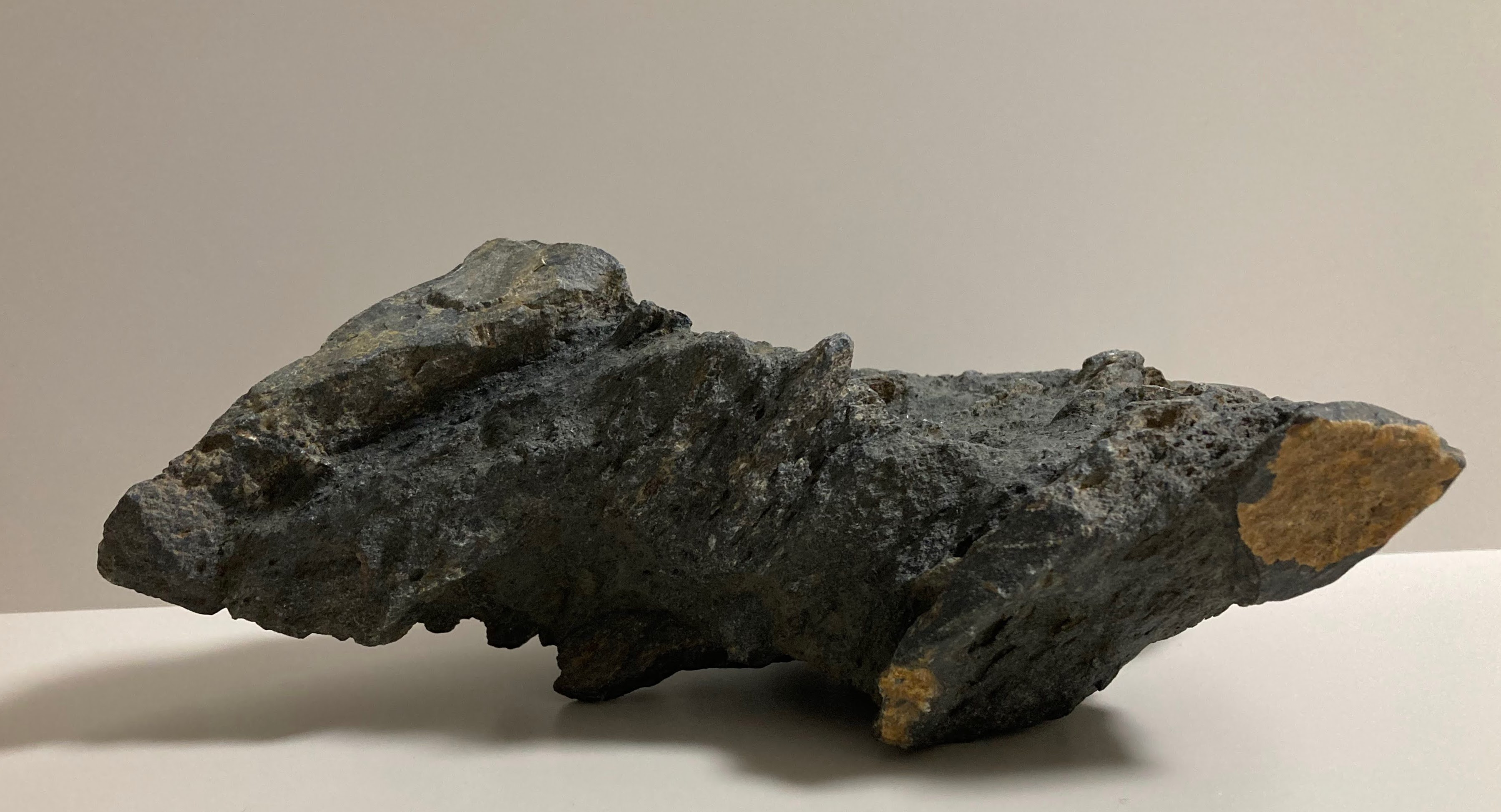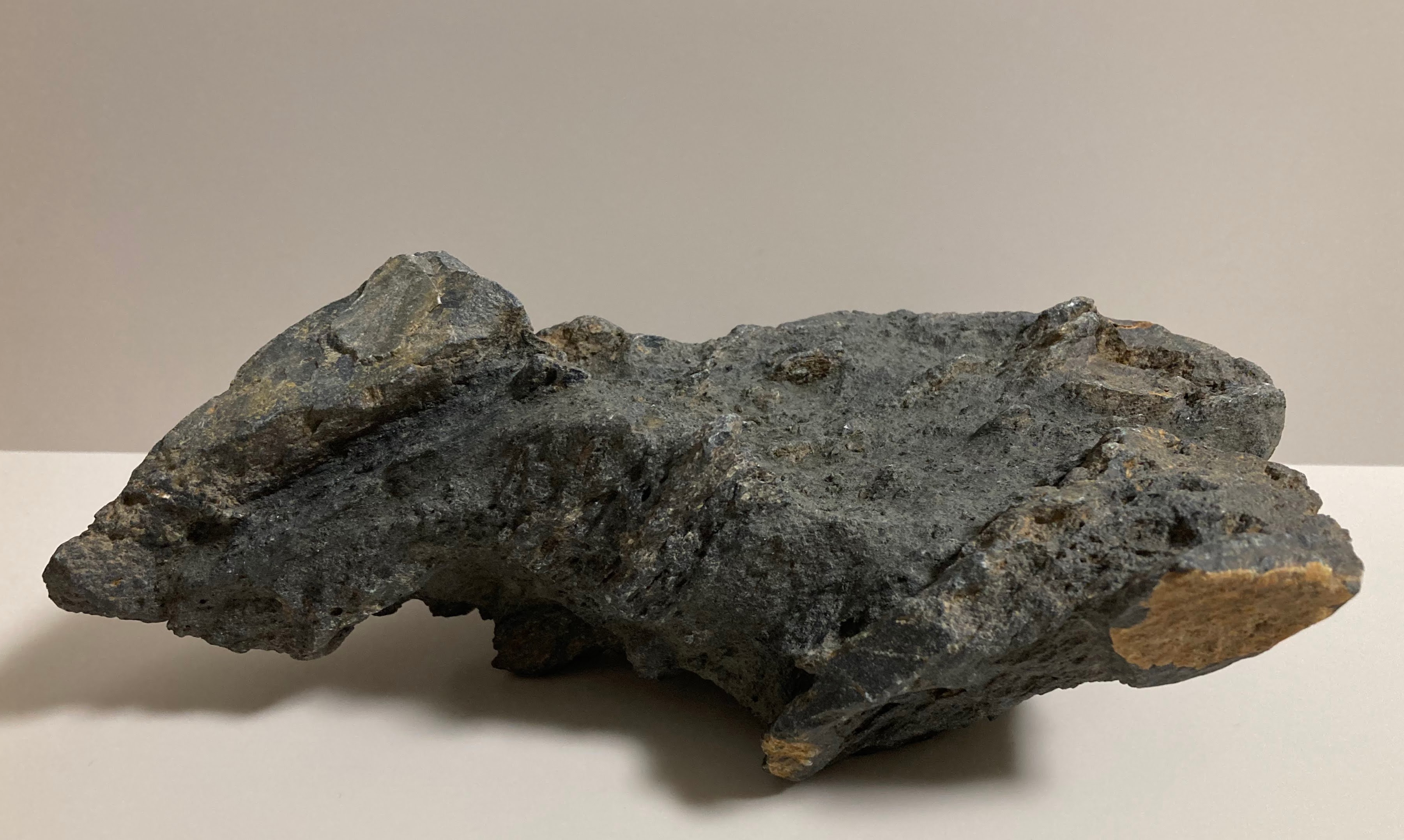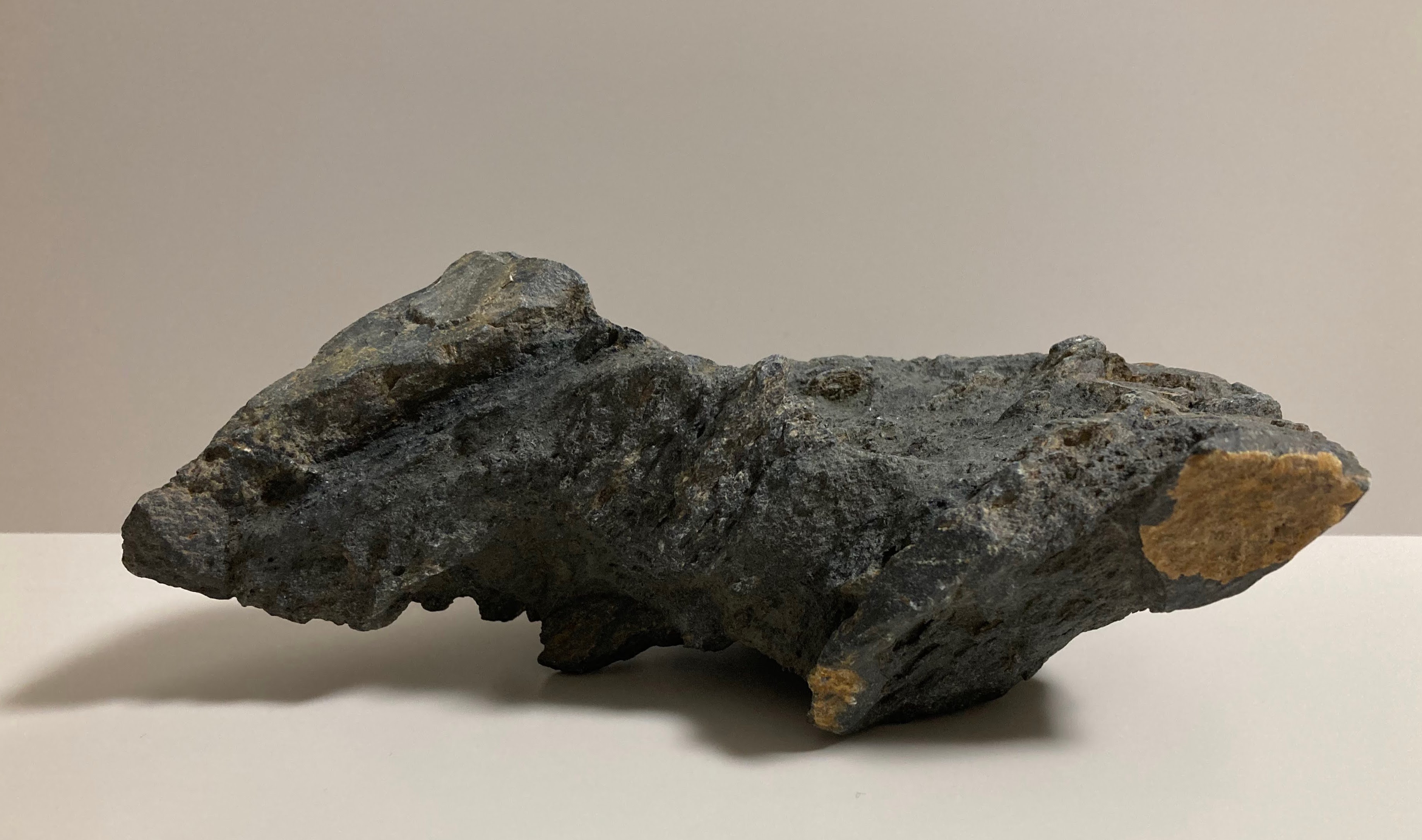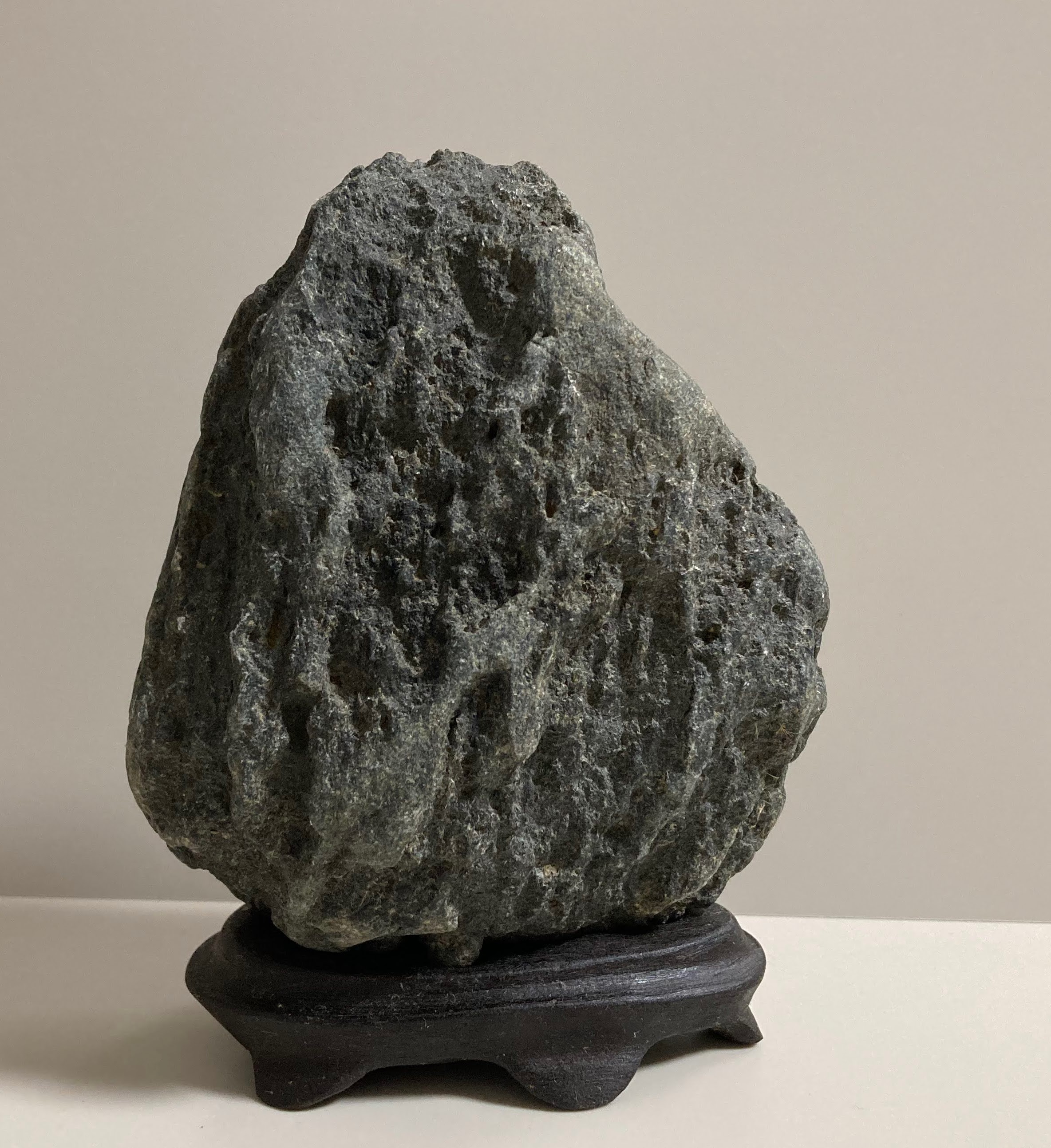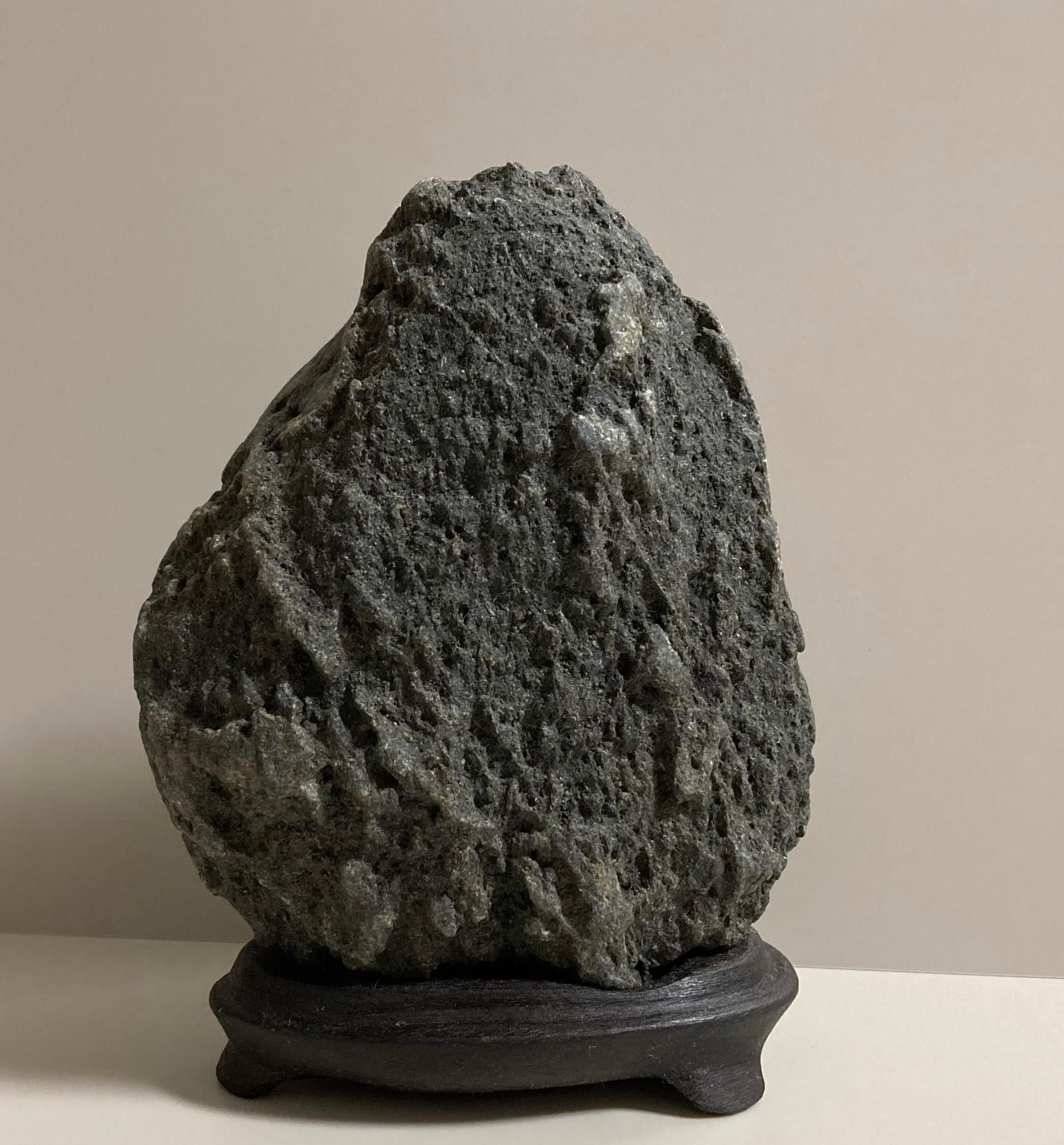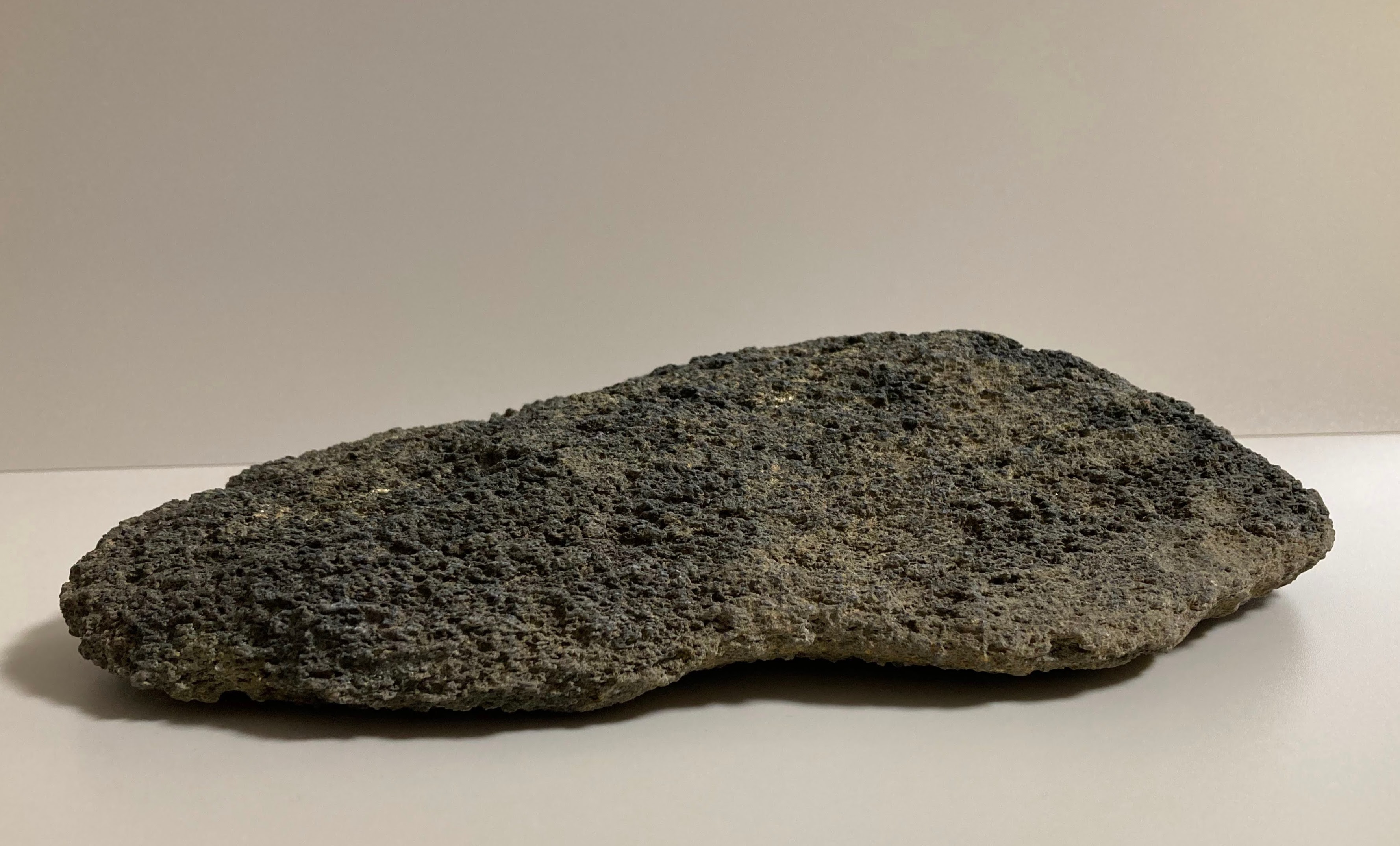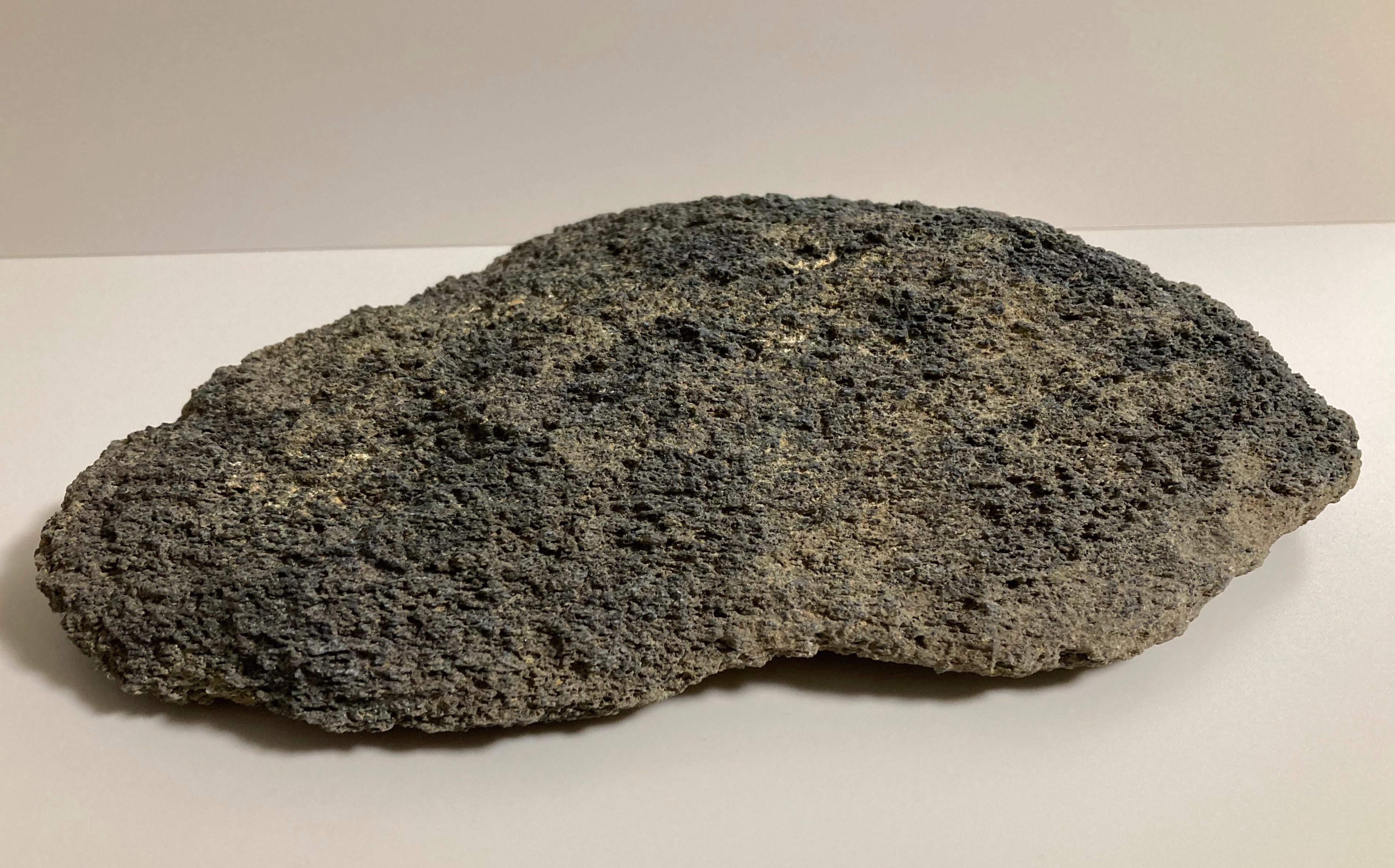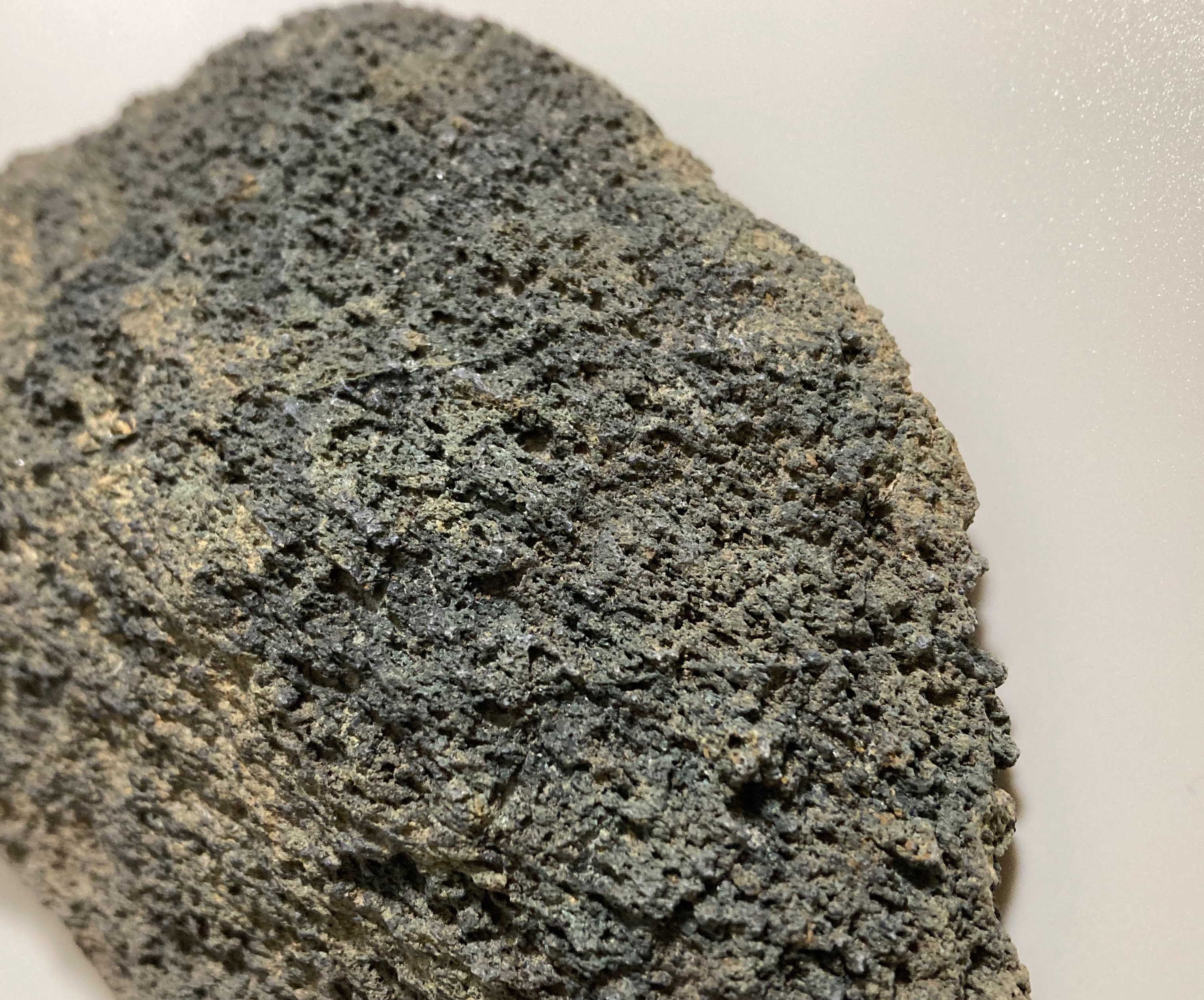Sajigawa-ishi-I, 佐治川石
Sajigawa-ishi
Sajigawa-ishi is a general term for "suiseki" found from the Saji River. What you need to be careful about here is that all the stones of the Saji River can be called Sajigawa-ishi, but the word "Sajigawa-ishi" in Suiseki refers to a certain range of stones, and this is not to say that all the stones of the Saji River have Suiseki value.
From now on, I will talk about Suiseki's Sajigawa-ishi.
Sajigawa-ishi is considered to be one of the three major stones in Suiseki, along with Kamogawa-ishi and Setagawa-ishi, so it accounts for a large proportion of the famous stones.
On the other hand, there are many stones that are questionable as to whether or not they are actually Sajigawa-ishi, so you need to be careful.
The most distinctive feature of Sajigawa-ishi is its texture.
Like stones from other famous rivers in Suiseki, there are many variations of Sajigawa-ishi, so it is difficult to make a general statement, but when you think of Sajigawa-ishi, the first thing that comes to mind is its rough surface.
The stone surface, which is also described as "Senbondachi", meaning standing thousand needles has a stinging feel to it when you touch it, and it even gives a sense of nobility as if it rejects those who casually try to touch it.
For this reason, Sajigawa-ishi can be said to be a stone that is more enjoyable to look at than to stroke its surface. If you want to stroke the stone, Setagawa-ishi would be better than Sajigawa-ishi.
There are many variations of Sajigawa-ishi, numbering more than ten, but the most representative ones are classified as Sajigawa ten stones or Sajigawa seven stones.
However, like the KamuiCotan seven stones and the Kasuga seven stones, there are not ten strictly defined types.
Sajigawa-ishi, Real true black
It is maguro, meaning a true black from the Saji River. Some stones, like this one, have a needle-serrated stone surface with relatively smooth protrusions due to river abrasion, but in the case of such a true black stone, it is originally called senbondachi rather than a uniform stone. Because it is composed of a certain type of mineral densely packed together, it often has a rougher surface than Setagawa-ishi. On the other hand, this makes the mountain's shape rich in unevenness, allowing you to enjoy the ruggedness and roughness of the mountain.
Sajigawa-ishi, Real true black
This stone was obtained as a Sajigawa-ishi, but there is some doubt as to whether it really is a Sajigawa-ishi. On the other hand, some of the true black from the Saji River do not have needle serrations like the previous stone. Also, the True black stones from the Saji River are hard and heavy, and contain iron and have a rust color. It is said that there was something called Iron stone that was prized as a garden stone in the early days. It is said that it resembles Setagawa-ishi.
When you look at this stone from that perspective, you can see that it is hard and heavy, and it also has a rust color. The areas where the river has rubbed are shiny black and look like iron. If you take a closer look, you can see a fibrous composition on the right side of the photo below, and on the back side, there are traces of complex metamorphosis, with some sparkling minerals mixed in here and there, giving you a feel of Sajigawa-ishi. If this is the case, it can be said that it resembles Setagawa-ishi.
Continuing with the introduction of Sajikawa-ishi.
Sajigawa-ishi, Real true black
I especially like the shape of this Sajigawa-ishi. The quality of the stone is similar to the true black of the first Saji River stone, and the recesses have an atmosphere of densely packed thin minerals, giving it a matte finish. It glitters and reflects light in places. The convex parts have a less mineral feel, and have the feel of an ordinary stone, like the second true black color. However, if you look closely at the convex parts, there are parts that shine depending on the angle. The color is a slightly grayish black, a color often seen in Sajigawa-ishi.
From a little above. It looks like a dragon is lying down.
It also looks like a fighter jet. But maybe my parents are idiots.
Next is Sajigawa Stone's ash gray ground.
Sajigawa-ishi, Ash gray ground
Ash gray ground has a chirimen, meaning crepe skin and is said to be light ink or blue in color. This stone was acquired because it is a shrunken skin stone unique to Sajigawa-ishi, and the explanation that the plum blossom pattern on the back is also attractive.
When it comes to chirimen stone, Fujieda chirimen-ishi is famous, and it is true that the skin of Fujieda chirimen stone is similar to the grain of chirimen's crepe weave. However, it is not hard.
Sajigawa-ishi is a type of metamorphic rock that was formed by ejecta from the mid-Paleozoic to mid-Mesozoic eras under high pressure, and is considered to be green phyllite or greenstone. In other words, Sajigawa stone is relatively hard, and even though it has a crepe skin, it is not normally a delicate chirimen like Fujieda chirimen-ishi, which is soft.
Although this is my personal opinion, I think that the Sajigawa chirimen is only different in form from the needle-serrated Sajigawa-ishi. In other words, among the needle-serrated Sajigawa-ishi, those with a finer and denser composition may have been polished to some extent by river friction and become chirimen-like.
Sajigawa-ishi seems to be classified as green phyllite or greenstone, so mineralogically there may not be much difference between needle-serrate and chirimen-like.
A little more about Sajigawa-ishi's ash gray ground. The following stones are of unknown origin, but are interesting.
Sajigawa-ishi, Ash gray ground
Regarding the ash gray ground of Sajigawa-ishi, there is a description of the chirimen skin as "greenish brown-colored pear skin."
This stone is greenish brown in color. If the meaning of pear skin is that of Setagawa-ishi, it would not apply, but the stone surface resembles chirimen.
Furthermore, the texture of the stone is different from that of Sajigawa-ishi, which has a needle-serrated shape, and has a composition of fine grains condensed. The atmosphere is very similar.
I believe that this stone is Sajigawa-ishi.
Although this is my personal opinion, I think there are variations in the Sajigawa ash gray ground. The colors of graystone are said to be gray-black, blue, and gray. Here, blue is thought to be actually green, or even nightingale, due to Japan's unique cultural background in which green is expressed as blue.


